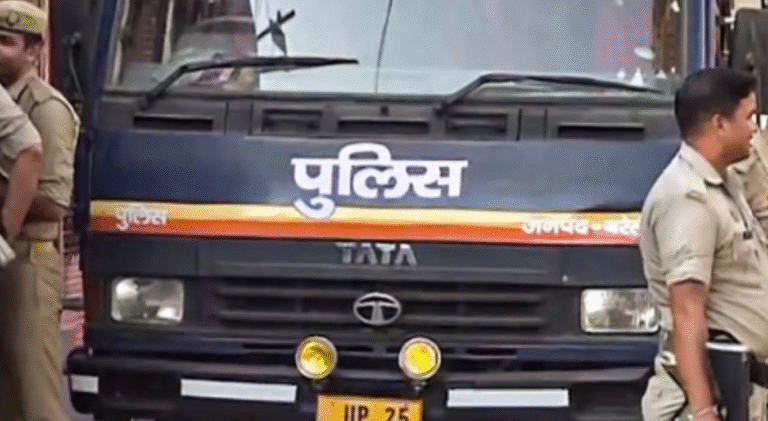
Hey there, have you ever found yourself at a crossroads, wondering which path to take? Maybe it’s a big job decision, a family matter, or just figuring out if things will turn out okay. In our fast-paced world, it’s easy to feel lost. That’s where something as timeless as Ramayan Prashnavali comes in. This isn’t just some old book of questions – it’s a gentle guide from the heart of Hindu tradition, pulling wisdom straight from Lord Ram’s story. Rooted in the epic Ramcharitmanas by the poet-saint Tulsidas, it offers a way to seek answers through faith and a touch of mystery. Think of it like chatting with a wise old friend who knows the Ramayan inside out. In this piece, we’ll dive deep into what it is, how it works, and why it still touches so many lives today. Whether you’re a devotee or just curious, there’s something here for you.
The Roots of Ramayan Prashnavali
Picture this: It’s the 16th century in India, during the rule of Mughal emperor Akbar. A humble poet named Goswami Tulsidas sits down to retell the ancient tale of Lord Ram – not in Sanskrit, but in the everyday language of Awadhi, so everyone can connect with it. That masterpiece is the Ramcharitmanas, a poetic version of the Valmiki Ramayan with over 12,000 lines packed with devotion and life lessons. Tulsidas didn’t stop there. He crafted something special called the Ram Shalaka, or Ramayan Prashnavali, as a tool for everyday folks to turn to for guidance.
This prashnavali is like a treasure map hidden in verses. It draws from the chaupais – those rhythmic four-line stanzas – that capture moments from Ram’s life, from his birth in Ayodhya to his triumph over Ravana. Tulsidas believed that by meditating on these lines, you could invite divine insight into your own troubles. It’s not magic in the wand-waving sense, but a bridge between your heart and the eternal dharma lord Ram lived by. Over centuries, it’s spread across homes, temples, and even online apps, helping people from farmers to CEOs make choices.
What makes it so enduring? The Ramayan itself is more than a story – it’s a mirror for human struggles. Prashnavali taps into that, turning abstract teachings into personal nudges. Historians note that Tulsidas drew inspiration from older traditions, like oracle practices in other faiths, but infused it with pure bhakti, or devotion. Today, in places like Varanasi where Tulsidas walked, you’ll find pilgrims still using it during festivals. It’s a reminder that wisdom isn’t locked in dusty scrolls; it’s alive, waiting for you to ask.
How Does Ram Shalaka Work?
At its core, Ramayan Prashnavali is a clever setup of words and faith. Imagine a big grid, 15 rows by 15 columns, filled with akshars – letters and syllables – from the Ramcharitmanas. Each spot points to a specific chaupai, like a secret code linking your question to a slice of the epic. When you seek an answer, you don’t flip pages randomly; instead, you let your intuition guide you to a spot on this shalaka board. That spot unlocks a verse, and boom – there’s your guidance, wrapped in poetry.
It’s all about surrender. The idea is that Lord Ram, through Tulsidas’s words, speaks directly to you. Positive vibes might land you on a green-highlighted spot, signaling go-ahead, while a red one whispers caution. But it’s the chaupai that does the heavy lifting. For instance, if it pulls a line about Ram’s patience in exile, it might be telling you to hang in there during tough times. No two readings are the same because your mindset shapes the pick.
This system isn’t rigid – it’s fluid, like a river carrying you to truth. Traditional users might chant a simple prayer first, eyes closed, finger hovering over a printed chart. Online versions make it easy: click after focusing your thought, and the verse pops up with a plain-English meaning. The beauty lies in interpretation. A single line can mean victory after struggle or the joy of letting go. It’s not fortune-telling for show; it’s a nudge toward righteous living, echoing the Ramayan’s themes of duty, love, and courage. Over time, users say it builds trust in the unseen, turning doubt into quiet strength.
Step-by-Step Guide to Using Ram Prashnavali
Ready to give it a try? Don’t worry, it’s simpler than tying your shoelaces. First things first: Get yourself in the right frame of mind. Take a quick bath or wash up, slip into fresh clothes, and find a quiet corner – maybe light a lamp or incense if that feels right. Sit comfortably, close your eyes, and picture Lord Ram with his bow, that calm smile inviting your trust. Whisper a short prayer like “Jai Shri Ram” to set the tone. This isn’t about rituals for show; it’s about opening your heart.
Next, nail down your question. Keep it clear and yes-or-no style, like “Will this move bring me peace?” or “Should I say yes to this offer?” Vague stuff muddies the waters, so be honest and specific. No cheating by asking the same thing twice in a day – that’s like ignoring a friend’s advice. Now, if you’re using a physical book, hold it gently, think hard, and let your finger land naturally on the shalaka grid inside. Note the letters, form the akshar, and trace it back to the matching chaupai in the main text.
For the digital crowd, head to a trusted site, concentrate, and click blindly on the online chart. Up pops the verse, often with a color code and a breakdown. Read it slowly – savor the words. If it’s upbeat, like praising steadfastness, lean into action. A somber one? It might urge patience or a rethink. Reflect: How does this fit my life? Journal it if you like, to track patterns over time. Remember, the real power is in applying the lesson, not just the answer. Start small, build faith, and soon it feels like a conversation with the divine. Folks who’ve stuck with it swear by the clarity it brings.
Real-Life Stories and Examples from Users
Stories bring this alive, don’t they? Take Priya, a teacher from Delhi I heard about through a friend. She was torn between two schools – one steady pay, the other a passion project with risks. Heart pounding, she turned to the prashnavali one rainy evening. Her finger – or click – landed on a chaupai from the Ayodhya Kand, where Ram reassures his mother Kaushalya before leaving for the forest: something about duty over comfort, enduring for the greater good. It hit her like a gentle push. She chose the passion gig, and within a year, it bloomed into workshops that changed kids’ lives. That verse wasn’t just words; it was her roadmap.
Or consider Raj, a shopkeeper in a small town. Business was slumping, and he wondered if expanding was wise. The shalaka gave him a line from the Lanka Kand, amid the war’s chaos, where Hanuman reminds us that true strength comes from devotion, not force. Red-tinged, it warned of pitfalls but urged faith-fueled effort. Raj held back on loans, tweaked his approach with more community ties, and sales picked up steadily. He laughs now, saying it taught him to fight smart, not hard.
These aren’t rare tales. Online forums buzz with shares: a student acing exams after a nudge on focus, a couple mending ties through forgiveness themes. Even skeptics dip in during crises, often surprised by the fit. One example verse might go: “Siyaramamay sab granthi kholihim” – unlocking knots through Ram’s grace. For a health worry, it could mean healing via surrender. The key? It’s personal. Your story weaves into Ram’s, turning ancient ink into today’s light. These moments show prashnavali isn’t prediction – it’s partnership with the divine.
The Spiritual Depth Behind the Verses
Peel back the layers, and Ramayan Prashnavali reveals a well of soul-stirring truths. Each chaupai isn’t random; it’s a gem from Ram’s journey, teaching dharma in disguise. Take the exile parts – they mirror our own wanderings, urging resilience when life pulls the rug out. Tulsidas wove in bhakti so thick you feel Ram’s presence in every line, reminding us that questions aren’t just about outcomes but growing through them.
Spiritually, it’s a practice in surrender. By seeking through the shalaka, you’re saying, “I trust more than my fears.” Verses on Sita’s devotion or Lakshman’s loyalty hit deep, showing love as action, not just feeling. In tough spots, a line about Ravana’s fall warns against ego, while Ram’s bridge to Lanka inspires bridging gaps in relationships. It’s therapy wrapped in poetry -freeing knots of worry, fostering peace.
For deeper dives, pair it with recitation. Chant the full Doha before asking; it aligns your vibes. Many find it boosts meditation, turning daily puzzles into paths to self-knowledge. In a world of quick fixes, this invites slow wisdom: reflect, act, repeat. Gurus say it’s Tulsidas’s gift, making the Ramayan a living guru. Whether it answers “yes” or “wait,” the real win is the virtue it instills – patience, humility, grace. Over time, users glow with that inner calm, proof that spiritual tools like this aren’t relics; they’re roots keeping us grounded.
Why Ram Prashnavali Still Matters Today
In our gadget-filled lives, why bother with an old-school oracle? Because it cuts through the noise. Amid apps and algorithms, Ramayan Prashnavali offers something real: a pause to breathe, to connect with something bigger. Young professionals use it for career forks, parents for kids’ futures – it’s versatile, fitting modern messes like burnout or breakups with timeless tweaks.
Think about it: Social media bombards us with opinions, but here, guidance comes from within, sparked by sacred words. It’s eco-friendly spirituality – no gurus needed, just you and the text. In therapy circles, folks blend it with mindfulness, finding verses echo CBT ideas like reframing thoughts. During pandemics or elections, searches spike, showing its pull in uncertainty.
Critics call it superstition, but believers see science in faith’s placebo—belief heals. Plus, it’s inclusive: No caste, no cost, just heart. Communities host shalaka sessions at Diwali, bonding over shared insights. For global Indians, online versions bridge homesickness, keeping traditions alive. Ultimately, it matters because it humanizes us – reminds that Ram’s struggles were ours too. In chasing likes, we forget depth; prashnavali pulls us back. Try it next dilemma; you might just find clarity, and a stronger tie to your roots.
Frequently Asked Questions (FAQs)
What exactly is Ramayan Prashnavali?
It’s a divination tool from Tulsidas’s Ramcharitmanas, using verses to guide answers to life’s questions through faith.
Is it okay to use it every day?
Best to limit to once a day, with pure intent. Overuse dilutes the focus.
Do I need to know Hindi to use it? N
o, many sites offer English translations alongside the original Awadhi verses.
What if the answer feels negative?
See it as wise caution – trust the process, and look for the lesson in perseverance.
Can non-Hindus use Ram Prashnavali?
Absolutely, it’s open to anyone seeking honest guidance with respect.
Where can I find a free version?
Check trusted sites like AstroSage or RamPrashnavali.in for online charts.



